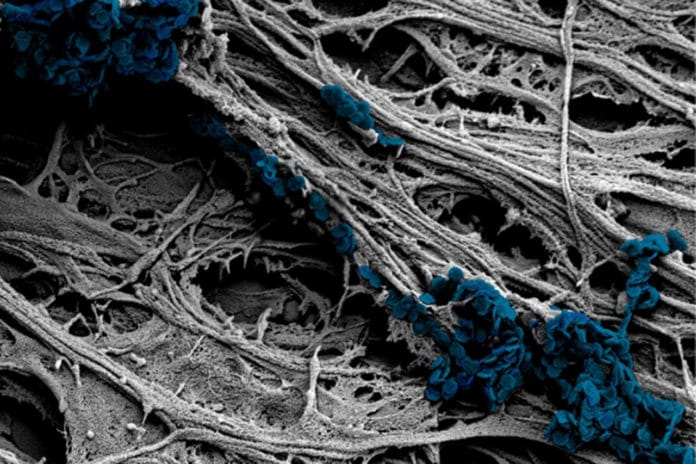Most of the body’s neural cells respond to electrical and chemical stimuli as well as mechanical effects, such as pressure or vibration. But, such responses are challenging to study because there has been no easily controllable method for inducing such mechanical stimulation of the cells. Now, scientists from MIT have come up with a method to do so.
The new method is entirely contact-free after an initial injection of particles. It could be reactivated at will through an externally applied magnetic field.
The new method opens a new pathway for the stimulation of nerve cells within the body. This mechanical stimulation, which activates entirely different signaling pathways within the neurons themselves, could provide a significant area of study.
The way into the new procedure was creating minuscule discs with an unusual magnetic property, which can make them begin shuddering when exposed to a particular sort of varying magnetic field. Even though the particles themselves are just 100 or so nanometers across, about a hundredth of the size of the neurons they are trying to stimulate, they can be made and injected in great quantities, so that all in all their impact is sufficiently able to actuate the cell’s pressure receptors.
Alexander Senko Ph.D. ’19 said, “We made nanoparticles that produce forces that cells can detect and respond to.”
Associate Professor Polina Anikeeva said, “Conventional magnetic nanoparticles would have required impractically large magnetic fields to be activated, so finding materials that could provide sufficient force with just moderate magnetic activation was “a tough problem.” The solution proved to be a new kind of magnetic nanodiscs.”
The discs contain a vortex configuration of atomic spins when there are no external magnetic fields applied. This makes the particles behave as if they were not magnetic at all, making them exceptionally stable in solutions. When these discs are subjected to a fragile varying magnetic field of a few millitesla, with a low frequency of just several hertz, they switch to a state where the internal spins are all aligned in the disc plane. This allows these nanodiscs to act as levers — wiggling up and down with the direction of the field.
Anikeeva said, “This work combines several disciplines, including new chemistry that led to the development of these nanodiscs, along with electromagnetic effects and worked on the biology of neurostimulation.”
Scientists used particles made from hematite, a benign iron oxide, which can form the required disc shapes. They then converted hematite into magnetite. This chemical transition of hematite to magnetite dramatically turns a blood-red tube of particles to jet black.
MIT postdoc Danijela Gregurec said, “We had to confirm that these particles indeed supported this unusual spin state, this vortex. They first tried out the newly developed nanoparticles. They proved, using holographic imaging systems provided by colleagues in Spain, that the particles did react as expected, providing the necessary forces to elicit responses from neurons. The results came in late December, and “everyone thought that was a Christmas present.”
Anikeeva recalls, “when we got our first holograms, and we could see that what we have theoretically predicted and chemically suspected was physically true.”
“The work is still in its infancy. This is a very first demonstration that it is possible to use these particles to transduce large forces to membranes of neurons to stimulate them.”
The work was supported by the U.S. Defense Advanced Research Projects Agency, the National Institute of Mental Health, the Department of Defense, the Air Force Office of Scientific Research, and the National Defense Science and Engineering Graduate Fellowship.
Journal Reference:
- Danijela Grehurec et al. Magnetic Vortex Nanodiscs Enable Remote Magnetomechanical Neural Stimulation. DOI: 10.1021/acsnano.0c00562
